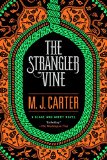Summary | Excerpt | Reading Guide | Reviews | Beyond the book | Read-Alikes | Genres & Themes | Author Bio

A vast, richly imagined, Dickensian work about the rough-and-tumble world that produced an author who defined an age. Few novels deserve to be called magnificent. Death and Mr. Pickwick is one of them.
Death and Mr. Pickwick is a vast, richly imagined, Dickensian work about the rough-and-tumble world that produced an author who defined an age. Like Charles Dickens did in his immortal novels, Stephen Jarvis has spun a tale full of preposterous characters, shaggy-dog stories, improbable reversals, skulduggery, betrayal, and valor-all true, and all brilliantly brought to life in his unputdownable book.
The Posthumous Papers of the Pickwick Club, featuring the fat and lovable Mr. Pickwick and his Cockney manservant, Sam Weller, began as a series of whimsical sketches, the brainchild of the brilliant, erratic, misanthropic illustrator named Robert Seymour, a denizen of the back alleys and grimy courtyards where early nineteenth-century London's printers and booksellers plied their cutthroat trade. When Seymour's publishers, after trying to match his magical etchings with a number of writers, settled on a young storyteller using the pen name Boz, The Pickwick Papers went on to become a worldwide phenomenon, outselling every other book besides the Bible and Shakespeare's plays. And Boz, as the young Charles Dickens signed his work, became, in the eyes of many, the most important writer of his time. The fate of Robert Seymour, Mr. Pickwick's creator, a very different story-one untold before now.
Few novels deserve to be called magnificent. Death and Mr. Pickwick is one of them.
At 800+ pages, this novel is chock-full of digressions – some amusing, others seemingly irrelevant. Incidents are sometimes repeated from different perspectives, and there are many stories-within-stories. These can be tiresome for readers who just want to follow the central thread. Jarvis' descriptions of unusual characters and holiday scenes feel so historically accurate they might merit the adjective "Dickensian" – were that not almost a dirty word in this novel's context...continued
Full Review
(812 words)
This review is available to non-members for a limited time. For full access,
become a member today.
(Reviewed by Rebecca Foster).
Illustrations were crucial to Victorian novels – a fact that is difficult to absorb nowadays, when the only books for adults with drawings are graphic novels. Charles Dickens was known for showing obsessive interest in his novels' illustrations, always making sure that artists adhered closely to his written descriptions. All but two of his novels (Hard Times and Great Expectations) first appeared with illustrations.
The controversy over Robert Seymour's work on The Pickwick Papers, the subject of Stephen Jarvis' Death and Mr. Pickwick, should not distract from the long, fruitful relationships Dickens had with other illustrators. He popularized these artists' work, but at the same time their drawings helped to ...
This "beyond the book" feature is available to non-members for a limited time. Join today for full access.

If you liked Death and Mr. Pickwick, try these:

The Convictions of John Delahunt
by Andrew Hughes
Published 2016
Based on true events that convulsed Victorian Ireland, The Convictions of John Delahunt is the tragic tale of a man who betrays his family, his friends, his society and, ultimately, himself.

by Miranda J. Carter
Published 2016
Set in the untamed wilds of nineteenth-century colonial India, a dazzling historical thriller introducing an unforgettable investigative pair.
To make a library it takes two volumes and a fire. Two volumes and a fire, and interest. The interest alone will ...
Click Here to find out who said this, as well as discovering other famous literary quotes!